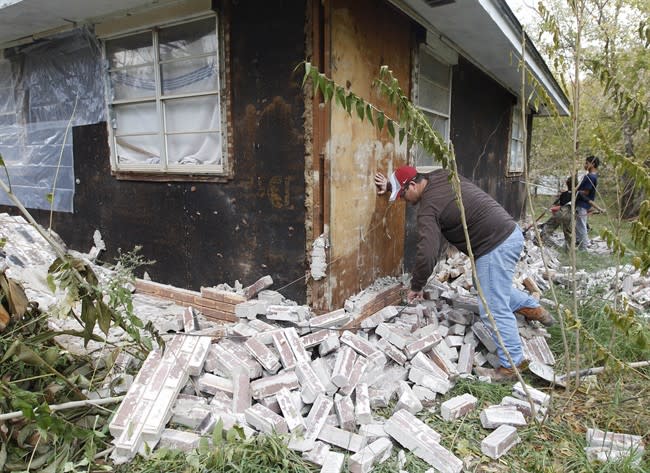 Science and Weather
Science and WeatherOklahoma earthquakes caused by fracking, new study reveals

A dramatic rise of earthquakes rumbling through Oklahoma in recent years has now been linked with wastewater disposal techniques associated with the controversial practice of fracking in a new study released this week in the journal of Science Express.
In fact, over 100 small- and medium-sized quakes over the past five years can be attributed to the controversial well-stimulation technique, according to the report.
Hydraulic fracturing, known commonly as fracking, is an increasingly popular production technique to get at deep oil and gas pockets, and involves pumping millions of litres of water underground to crack the rock and free up the surrounding fossil fuels. Much of that water comes back to the surface after drilling, and instead of treating it, companies commonly dispose of the water by pumping it back down in large underground wells. This wastewater can lubricate the rock formations, allowing layers to slide and cause earthquakes.
The new research looked at the activity at four of these injection wells near Oklahoma City which pump 477,000 cubic meters of water into the ground every month – and made a direct correlation to seismic activity in the region.
"Energy that is released in the earthquakes does not come from the wastewater injection itself but instead comes from stress in the earth that builds over time by natural deformation of the rocks," said study co-author Barbara Bekins, a research hydrologist with the U.S. Geological Survey in an interview with Yahoo Canada News.
"The injection process causes fluid pressure to increase and this pressure makes it easier for the rocks to slip past each other."
These findings are not necessarily surprising to the scientists since this connection between wastewater injection and earthquakes has been known since the 1960s and it is the most common method of disposal of wastewater across the U.S. Midwest.
"The rate of wastewater injection in central Oklahoma approximately doubled between 2004 and 2008, followed by increases in seismicity a couple years later," explained Bekins.
"In fact there has been a 40-fold increase in the frequency of Earthquakes within the state during 2008-2013 as compared to the previous three decades."

And they haven't all been minor rumbles - one tremor that hit near Prague, Okla., in November 2011 measured in at a surprising magnitude 5.7 on the Richter scale.
Similar man-made earthquakes have occurred in Arkansas, Ohio, Colorado and California in recent years.
Many companies are also now exploring for and developing shale gas resources in Alberta, British Columbia, Quebec, and New Brunswick.
Even in Canada there has been reports of tremors measuring a magnitude of 3.8 in northern British Columbia. Companies in that province are prohibited from disposing of wastewater above ground, therefore they use underground disposal wells.
Bekins and her team seem to agree that while most of the 145,000 or so disposal wells in the United States do not trigger earthquakes, future gas and oil operations should include avoiding wastewater disposal near major faults and routine earthquake and pressure monitoring should be put in the field where the results are publicly available.
"In general, if injection rates increase then the possibility of induced earthquakes is a concern," Bekins said.
The hope now is that these findings might be something that the oil and gas industry can work with to create better practices and develop better methods of injecting that are safer and cleaner.
Geek out with the latest in science and weather.
Follow @YGeekquinox on Twitter!


